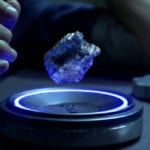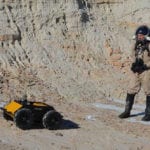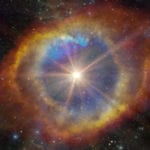 Technology
Technology  Technology
Technology  Humans
Humans 10 Everyday Human Behaviors That Are Actually Survival Instincts
 Animals
Animals 10 Animals That Humiliated and Harmed Historical Leaders
 History
History 10 Most Influential Protests in Modern History
 Creepy
Creepy 10 More Representations of Death from Myth, Legend, and Folktale
 Technology
Technology 10 Scientific Breakthroughs of 2025 That’ll Change Everything
 Our World
Our World 10 Ways Icelandic Culture Makes Other Countries Look Boring
 Misconceptions
Misconceptions 10 Common Misconceptions About the Victorian Era
 Mysteries
Mysteries 10 Strange Unexplained Mysteries of 2025
 Miscellaneous
Miscellaneous 10 of History’s Most Bell-Ringing Finishing Moves
 Technology
Technology Top 10 Everyday Tech Buzzwords That Hide a Darker Past
 Humans
Humans 10 Everyday Human Behaviors That Are Actually Survival Instincts
 Animals
Animals 10 Animals That Humiliated and Harmed Historical Leaders
Who's Behind Listverse?

Jamie Frater
Head Editor
Jamie founded Listverse due to an insatiable desire to share fascinating, obscure, and bizarre facts. He has been a guest speaker on numerous national radio and television stations and is a five time published author.
More About Us History
History 10 Most Influential Protests in Modern History
 Creepy
Creepy 10 More Representations of Death from Myth, Legend, and Folktale
 Technology
Technology 10 Scientific Breakthroughs of 2025 That’ll Change Everything
 Our World
Our World 10 Ways Icelandic Culture Makes Other Countries Look Boring
 Misconceptions
Misconceptions 10 Common Misconceptions About the Victorian Era
 Mysteries
Mysteries 10 Strange Unexplained Mysteries of 2025
 Miscellaneous
Miscellaneous 10 of History’s Most Bell-Ringing Finishing Moves
10 Plans Scientist Have Already Proposed For Colonies In Space
Until recently, the idea of living on another planet has been little more than science fiction. Lately, though, we’ve had the chance to see one of wildest dreams slowly unfold into reality. SpaceX and Mars One have started projects to colonize Mars, the European Space Agency has been talking about colonizing the Moon, and China has openly described plans to build mining colonies in outer space.
It’s just a matter of time now before we see the first colonies in space. As crazy as some of these ideas might sound, you just might be able to visit any one of them in the near future.
10 Cloud Cities On Venus
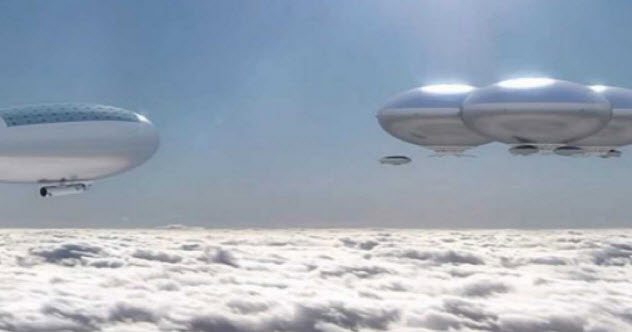
Living on the surface of Venus would be like building a home in the pits of hell. The temperatures would boil your skin, the atmosphere would crush you as tightly as the depths of the ocean, and a thick mist of sulfuric acid would fill the air.
And yet, despite all that, some scientists think that Venus just might be the best place we could set up a colony. It seems counterintuitive. But as hellish as Venus is on the surface, it’s surprisingly comfortable as long as you don’t touch the ground. At 50 kilometers (30 mi) up in the sky, Venus is one of the best places to live in the solar system.
Some scientists want to build floating cities right at the top of Venus’s clouds. They would be self-enclosed habitats filled with breathable air and lifted up by gigantic balloons. In the Venusian Cloud City, life would be a lot like that on Earth. The gravity would be almost identical, and the atmosphere would keep us safe from solar radiation.[1]
Even the temperature wouldn’t be too bad. Nights would drop to 0 degrees Celsius (32 °F), while the 117-Earth-day-long days would get up to 50 degrees Celsius (122 °F). You’d definitely sweat, but you wouldn’t boil alive.
9 Mining Colonies Inside Asteroids
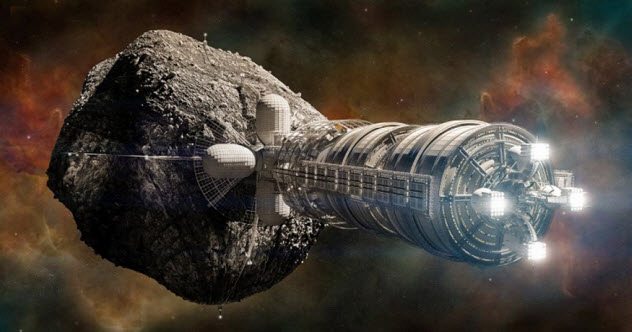
There’s no reason that we have to be limited to living on planets. Some scientists believe that we’re overlooking a possible home that’s all over our solar system: asteroids.
They might be the perfect places to set up the mining colonies of the future. Most of those gigantic rocks floating around in outer space are filled with elements like platinum. On an asteroid, you can mine as much as you want because you don’t have to care a lick for its environment.
The idea is to set up a space station around the asteroid and fill it with staff and mining equipment. Workers on the space station would slowly extract everything they could until the asteroid is completely hollowed out.
Inside the hollowed-out core of the asteroid, a new colony would be set up. They would be able to extract water and oxygen from the asteroid itself, so the colony should be fairly self-sustaining in theory. And since they’d be living underground, they’d be protected from the elements of space.[2]
8 Underwater Cities On Europa
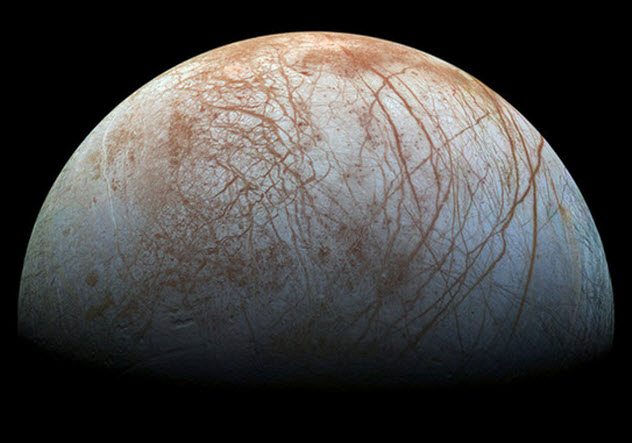
Europa, one of the moons of Jupiter, is covered in a thick layer of ice. Nobody knows exactly what lies under the surface, but there’s reason to believe that a whole ocean is waiting to be discovered if we could just make it through the ice.
In theory, that wouldn’t be impossible and it actually might make a decent place to live. The surface of Europa is bombarded with radiation—not just from the Sun but from Jupiter, too. Under the ice, though, we would be safe from the radiation and we might even find a thriving network of life.
The plan is to put a heated drill on the tip of a submarine and bore right into the ice. When the submarine gets through, it will drop the drill and start exploring the oceans of Europa. In theory, there should be a few places with pockets of air separating the ice and water. There, we could set up floating communities and start filling the underground oceans of Europa with life.[3]
7 Mobile Bases On The Moon
The obvious place to colonize is the Moon. NASA has been talking about setting up Moon bases for years. Originally, they wanted to build their bases in the underground caves that fill our Moon, but today, NASA’s considering a new idea. They want to put their colonies on wheels.
Moon colonies need to be mobile because nighttime usually lasts about 14 days on the Moon. Such a long night can get cold, and it makes it impossible to use solar power to keep things running. At the poles of the Moon, though, it’s almost always day. That means that NASA would be able to cover a Moon base with solar panels and get a nearly constant source of power.
If the Moon base could rove around, it’d be able to change its location with the Sun and always keep out of the cold. That would also let the colonists go on exploration missions or set up mines on different parts of the Moon.[4]
6 The Bernal Sphere
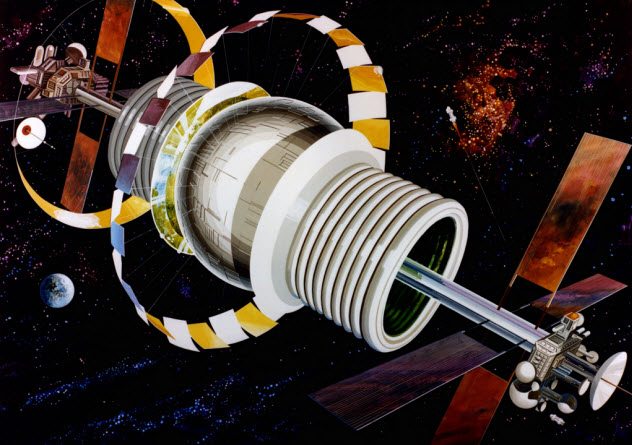
The Bernal sphere is an idea for a self-sustaining space station, complete with farms, livestock, and entertainment.
The space station would be surrounded by rings that are constantly rotating at incredible speeds. The rings would have different purposes, with some being used to grow crops and some being used to take care of animals. And they’d all stay in place because the rotation would create an Earthlike gravity inside.
That gravity, though, would follow some weird rules. For one thing, the center of the station would be a sphere and you’d be on the inside. That means that the landscape ahead of you would curve up instead of down like it does on Earth. So, if you looked up, you’d see a bird’s-eye view of the people on the other side of the sphere.
Gravity would be weaker in the center of the sphere than on the edges. In the middle, it would be so weak that you’d be able to fly. That’s something that the designers considered—and they think it could be a good thing. They believe that they could add a little fun to life in space by setting up a zero-gravity honeymoon suite right in the middle of the sphere.[5]
5 Domed Habitats On Mercury
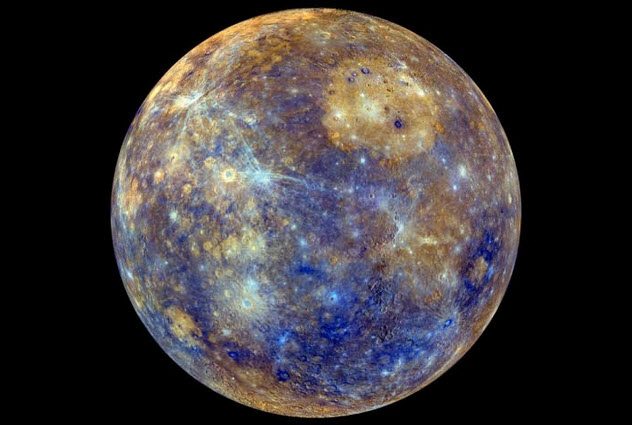
The planet closest to the Sun isn’t the most obvious place to colonize. For one thing, it’s incredibly hot. The temperature during the day can get as high as 427 degrees Celsius (800 °F), and the planet rotates so slowly that those days are long as 176 days here on Earth.
Those long days, though, might actually be a good thing. Mercury rotates so slowly that, theoretically, a city on wheels could keep up with it. If a mobile city on Mercury kept moving, it could keep itself right on the edge of the sunlight, where the temperatures aren’t much different from those on Earth.
The mobile city would have to be in a pressurized enclosure, but it might actually be livable. As long as the mobile city stayed on the northern side of the planet, it would be able to find craters full of frozen water. It could then pump that water into the enclosure to create water vapor, which would turn into oxygen through a process called photolysis. This would create a self-sustaining, breathable atmosphere on the closest planet to the Sun.[6]
4 Colonies By The Methane Lakes Of Titan
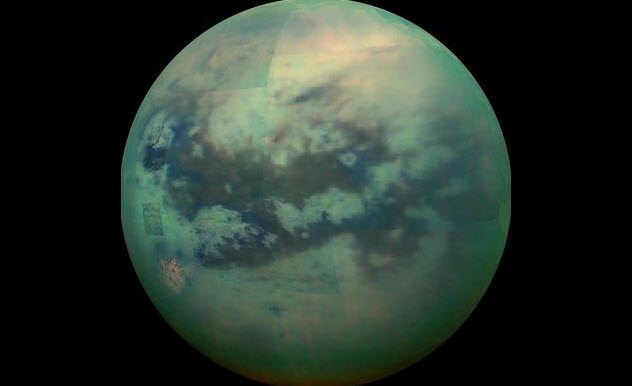
Titan, one of Saturn’s moons, is a strange place. Methane rains from the skies and forms into great lakes, and the gravity is so weak that you could just strap on a pair of wings, flap your arms, and fly.
It also might be the perfect place to set up a human colony—and not just because of the flying thing. One of the biggest threats about living in outer space is the radiation from galactic cosmic rays. And there’s no place in the solar system that’s safer from cosmic rays than Titan.
Titan’s atmosphere has more nitrogen—which helps to block cosmic rays—than Earth’s. Unlike Earth, though, Titan gets extra protection from Saturn’s magnetosphere. So, if we could find a way to survive on its surface, it would actually be one of the safer places to live.
There would be benefits, too. The lakes of methane and ethane that fill Titan are great sources of energy. Not only would those fuels be useful back on Earth, but they could be used to keep things running in habitats inside plastic domes inflated by warm oxygen and nitrogen.[7]
It just might be the future: camps full of people sucking up the methane lakes of Titan. And since the gravity would be 14 percent that of the Earth, they’d be able to get a lot of the heavy lifting done without even breaking a sweat.
3 Space Mirrors Around Ceres
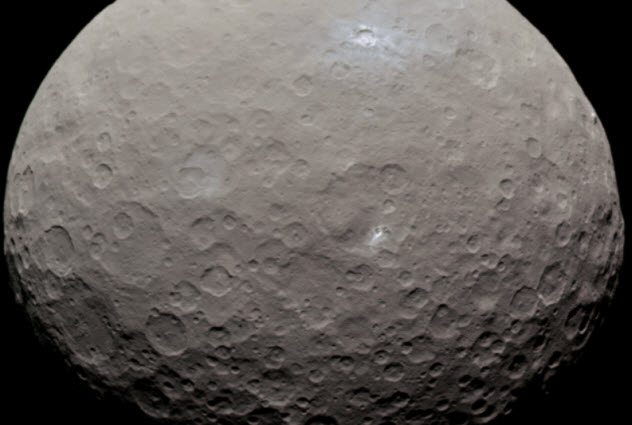
Hidden in the asteroid belt between Mars and Jupiter is a dwarf planet called Ceres. At its core, it’s a great big rock floating in space. But on the surface, it’s covered in a thick layer of ice—which means that it has water and that water could be set up to support life.
There’s reason to believe that Ceres has an ocean of liquid water underneath its frozen surface, but it’d be pretty far down. The mantle of ice around Ceres is believed to be about 100 kilometers (62 mi) thick, which would be hard to cut through.
Melting it, though, might not be out of the question—even if the idea sounds a little crazy. Some scientists want to put gigantic mirrors in orbit around Ceres to focus the light of the Sun on the surface. They’re hoping that extra light would get the temperature beyond the usual high of -73 degrees Celsius (-99 °F) and to something hot enough to thaw all that ice.
If it works, the water vapor rising off the ocean should create oxygen when it comes in contact with the radiation from the Sun. In theory, that should make it possible to set up floating, domed cities on the melted surface of the planet.[8]
2 Helium Mines On Uranus
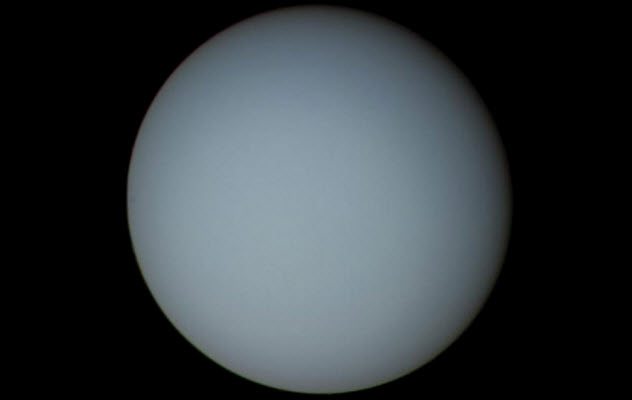
Uranus isn’t the closest planet to us, but we’ve still thought about colonizing it. That’s because Uranus is full of helium-3, a gas that we’ve almost completely depleted on Earth. As hard as it is to reach Uranus, we might not have any choice.
Jupiter and Saturn have plenty of helium-3 as well, but they would both be almost impossible to colonize. Jupiter’s gravity is too intense to survive, and Saturn’s rings shower its surface with a constant hail of meteors. Compared to those two choices, Uranus would actually be fairly easy to colonize.
The plan is to put hot-air balloons in the planet’s gassy atmosphere. From there, we’d be able to suck up the gases and send them to a space station in orbit around the planet.[9]
It would be dangerous. Massive storms travel around the planet, and if the colony ever failed to get out of one’s path, they’d be torn to shreds. We’d get an incredible source of fuel, though, that might just be enough to power our entire planet.
1 The Redwood Forests Of Mars
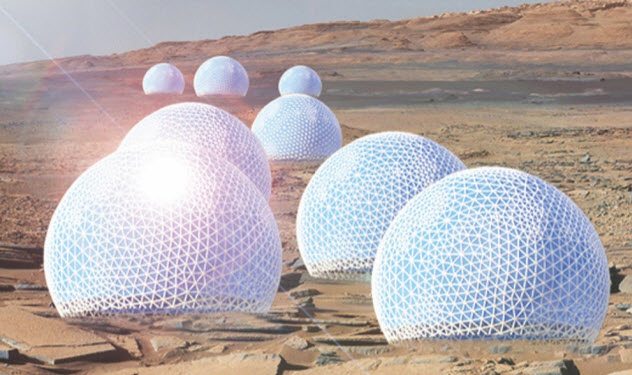
Operations to colonize Mars are underway. SpaceX has already outlined their plans to set up an interplanetary transport system that sends a fleet of ships to Mars and back once every 26 months. They haven’t been too open about what those colonies would actually look like. All Elon Musk has really shared about his “Mars City” is that it would be covered in a glass dome.
It just might look like the plan from a team at MIT that was called the “Redwood Forest.” Their idea is to litter the planets with glass domes connected by a network of underground tunnels that work like tree roots.[10]
The tunnels would tap into underground water and soil and send it up to the domes. Inside the domes, some of the water would be vaporized to create oxygen and supply hydroponic farms. The water would also fill the cells on the outside of the dome, protecting the people inside from solar radiation.
It’s an idea that should work, and it’s one that we might see in our lifetimes. If SpaceX’s plans work out, we can expect to see colonies on Mars pretty soon. They’ve claimed that they’ll be able to get one million people living on Mars within the next 50–100 years. So you might just end up retiring in the Redwood Forest of Mars.
Read more about space colonies on 10 Science Fiction Projects That Are Becoming Reality and 10 Things We Know About Elon Musk’s Future Colony On Mars.

